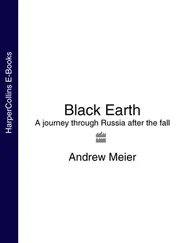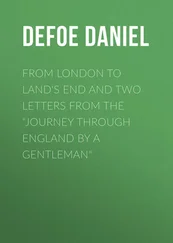There was an old charm used on Orkney which was supposed to heal deep cuts to the skin. To initiate the cure you had to send the name of the wounded person to the local enchanter or witch-doctor (the Old Norse term was vǫlva , meaning a wand carrier). The vǫlva would then add some new words to the patient’s name, as if they were sprinkling ingredients into a recipe. This word-concoction was then chanted repeatedly until, through some telepathic alchemy, the wound was healed. The charm worked even though the vǫlva performing it might be several miles away from their patient. After I left Orkney – and was many hundreds of miles away from the islands – I often wanted to send word back to the place, hoping the islands could perform their charm on me once more and help me find the birds I was searching for, just as they had gifted them to me while I was there.
How does a hen harrier live? It swims over the land as a storm petrel hugs the surface of the sea. It flies so low that sometimes it seems to be stirring the grass, its long legs trailing through the heather like a keel. A slow, tacking flight: float then flap. Then a twisting pirouette and it has swung onto a different tack, following another seam through the moor as if it is tracking a scent. It is like watching a disembodied spirit searching for its host, like a spirit twisting and drifting in the breeze. The harrier rides the swell of the moor, clinging to the contours for cover, creeping up on its prey and surprising it with a sudden burst of speed. The moment before it swoops, the harrier stalls, adjusts its angle a fraction – kestrel-like – then drops suddenly to the ground, talons reaching, seizing through the deep grass.
Up on the moor a cold wind has found me, poking me for signs of life. It sets me shivering in my bed in the heather. A male hen harrier is taking his time, twirling a thread over the hill. He is the colour of smoke and lavender, glaucous. He has not killed. The female is up from her nest agitating him, calling repeatedly, pushing him away from the nest site, chivvying him to go and hunt. The male slips away down the valley towards the sea. Later in the morning, when he returns, flapping heavily up towards the moor, he seems brighter, sea-gleamed, as if the sea has dressed him in its brightness.
I stay with the female harrier expecting her to quickly settle on the nest. Instead, what happens next is startling, unexpected, one of those remarkable encounters that Orkney shared with me. She began to gain height, drawing herself up to just above the horizon. Then a pause as she floated there as if in a new-found buoyancy, as if on the apex of a thermal. Perhaps the thermal had a vacuum like a lift shaft running through its centre. Whatever it was, a route through the air opened up to her like a narrow channel – a lead – opening through pack ice. For she saw it, drew her wing tips back behind her, and plunged down through the opening in a beautiful corkscrew dive. At the last moment, before she crashed into the heather, swooping up again, rising above the moor, clearing the horizon, then leaning and tipping over into another dive. She was dancing! A mesmerising sky-dance, repeated over and over again, making a pattern in the air like the peaks and troughs of a frantic graph. I paused from watching her only to wipe the condensation from the lenses of my binoculars. Then I immediately fixed back on to her display. Was she signalling to the male, or simply flexing her flight muscles after a long stint on the nest? For twenty minutes she scored the air, and held me there.
The hardest thing to do was to leave the moor in the evening. I walked down through the restless geese and kept turning round in search of one last glimpse of the hen harriers. Sometimes I would follow a male harrier down off the peat moss and watch him quartering the marshy borderland between the fields and the moor. Much of Orkney’s moorland has been reclaimed by agriculture. Only the difficult land remains as moor, but even this is sometimes coveted: there are hills on Orkney with strips of neat green fields dissecting the moor. In places it looks like the hills have been scalped. But in the borderlands between the moor and the fields there seemed to be a tussle between the two spheres so that it was unclear which was reclaiming the other. What had been tidied from the fields seemed to have been swept to these edges. And hen harriers thrived in these places, hunting voles along these tangled, unkempt margins.
I met hen harriers in unlikely places on the island. Far away from the moors, around the backs of houses, through the engine-ticking quiet of a farmyard. The birds seemed to slip easily between spheres, between the hills and the farmland below. In an evening field behind a white hotel, I watched a great commotion of oystercatchers and curlews dive-bombing a female harrier. She was slow and huge amongst the shrill wading birds, like some wandering beast come down out of the hills to forage.
Driving across the hill road to Harray in the early evening, I came down off the moor towards a farm and there was a male hen harrier swimming in a pool of wind. I stopped the car and watched him swirl through the farmyard, low over a hedge and into a back garden. He drifted up over a washing line and, for a moment, seemed to join the garments there, a blue-grey shirt flapping in the wind.
This morning the wind has shed some of its weight. The curlew’s song has more reach. A male harrier is coming in from the west, lucent against the heather. He is flying more quickly than usual, keeping a straight line, heading for the nest that sits in the lap of a hill amongst thick tussocks of moor grass. Now the female is up and rising to greet him, rushing towards the male. She is so much larger than him, her colours so markedly different, her tawny browns set against his smoking greyness. For centuries the male and female hen harrier were thought to be a different species, and this morning she might have been a larger hawk about to set upon the smaller male. But, at the last moment, she twists onto her back beneath the male and their talons almost brush. The male releases something from his feet and she seizes and catches it in mid-air. All of this happens so quickly and the movement is astonishing for its speed and precision. I cannot make out what it is the male has passed to her but the female has flipped instantly upright again and is rising towards the male once more. Again, at the last moment, she twists onto her back but this time nothing is passed between them. I’m puzzled why she repeats the manoeuvre like this. Perhaps the male still has something in his talons? But I am lucky to witness it again, it is like an unexpected echo and gives me the chance to replay the whole extraordinary exchange. I stay with the female and watch her drop into the heather, where she begins to feed.
Why do hen harriers make this beautiful, acrobatic food pass? When she is incubating, then brooding and guarding the young at the nest, the female is dependent on the male to provide food for her and the chicks. Later, when the chicks are closer to leaving the nest, she will resume hunting. But until then the male must work overtime to provide for the brood and his mate. Polygamous males, common on Orkney, are required to ratchet up their hunting, providing for two, sometimes three, separate nests (the record on Orkney is seven). Nesting in tall dense vegetation on the ground, the food pass is the most efficient way of securing the exchange of prey whilst also distracting from the precise location of the nest, the pass often taking place some distance from the nest itself, which helps to avoid drawing its attention to predators. I wonder if the female ever drops the pass from the male. The hen harrier is so supremely agile, their long legs have such reach, it seems like the male could lob the most awkward pass at his mate and she would still pluck the prey out of the air with all the time to spare.
Читать дальше











